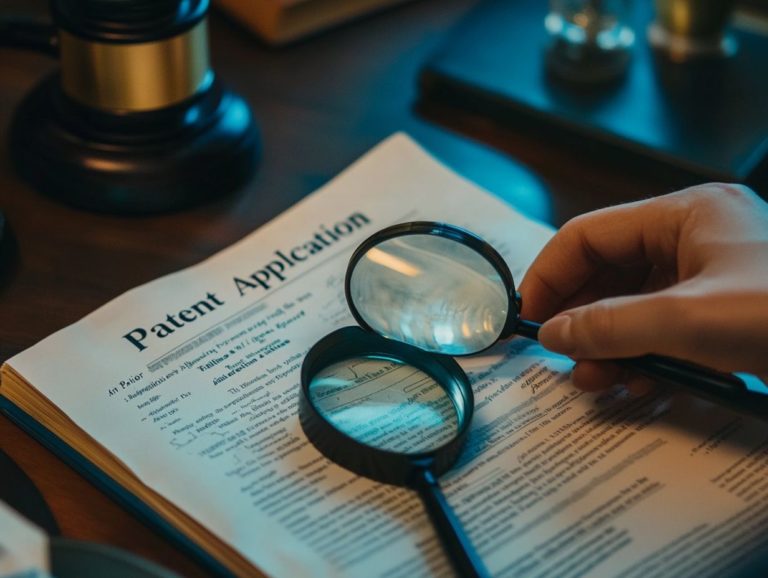5 Famous Patent Cases That Changed the Law
Patent law serves as a vital framework for safeguarding innovation, but its evolution has often been shaped by important court cases.
The legal landscape surrounding patent law has experienced significant transformations, from the controversial patenting of living organisms to the complicated issues of software patents.
This article delves into five pivotal cases:
- Diamond v. Chakrabarty
- Sony Corp. v. Universal City Studios
- Alice Corp. v. CLS Bank
- Association for Molecular Pathology v. Myriad Genetics
- eBay Inc. v. MercExchange
These cases transformed patent law and captured the dynamic interplay between technology and innovation.
Get ready to dive into these fascinating cases and explore their enduring implications for future patent disputes.
Contents
- Key Takeaways:
- 1. Diamond v. Chakrabarty: Patenting Living Organisms
- 2. Sony Corp. v. Universal City Studios: The ‘Betamax’ Case
- 3. Alice Corp. v. CLS Bank: Software Patents
- 4. Association for Molecular Pathology v. Myriad Genetics: Gene Patents
- 5. eBay Inc. v. MercExchange: Injunctions for Patent Infringement
- What Is the Purpose of Patent Law?
- What Are the Basic Requirements for Obtaining a Patent?
- How Have These Famous Cases Shaped Patent Law Today?
- What Are the Potential Implications of These Cases on Future Patent Disputes?
- How Do These Cases Reflect the Changing Landscape of Technology and Innovation?
- What Are Some Other Notable Patent Cases That Have Influenced the Law?
Key Takeaways:
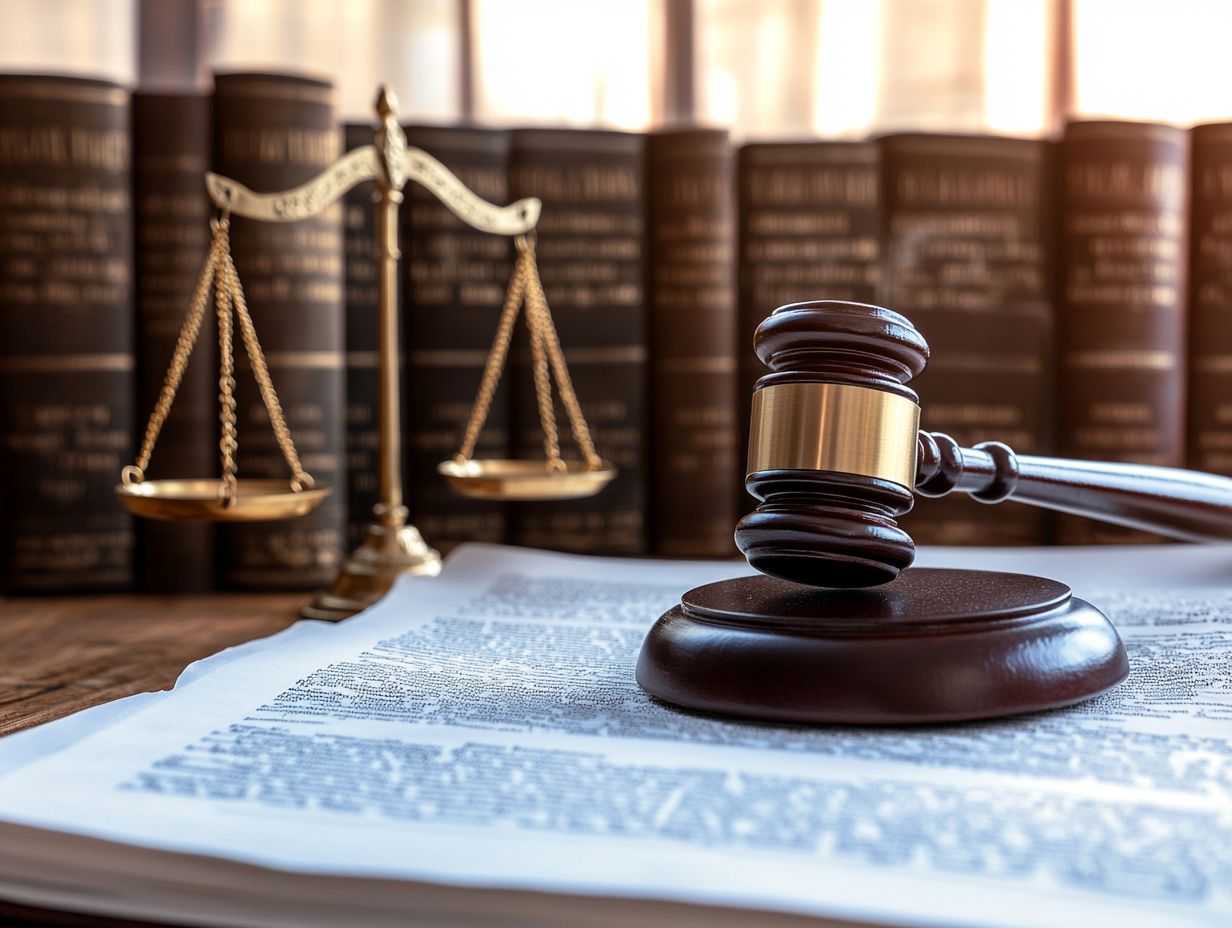
Patent law evolves with important cases that set precedents, impacting innovation and technology.
1. Diamond v. Chakrabarty: Patenting Living Organisms
The important case of Diamond v. Chakrabarty, decided by the Supreme Court of the United States, reshaped the landscape of patent law. It established that living organisms, particularly genetically modified bacteria, are indeed eligible for patent protection under existing intellectual property frameworks.
This case emerged when a scientist sought to patent a genetically engineered strain of bacteria capable of digesting crude oil, addressing pressing environmental challenges. The legal arguments revolved around whether a living organism could qualify as a “manufacture” or “composition of matter,” which means any combination of materials, as defined in the patent statute.
The Supreme Court ruled in favor of the scientist, affirming that Congress intended to permit patents for any new and useful process, machine, manufacture, or composition of matter. This ruling opened the way for future biotechnological advancements and established critical precedents regarding the eligibility of living organisms as patentable entities.
As a result, this decision carries significant implications for subsequent patent claims in biotechnology, emphasizing that innovations in the life sciences can secure legal protection. This fosters continued research and development in this rapidly evolving field.
2. Sony Corp. v. Universal City Studios: The ‘Betamax’ Case
The ‘Betamax’ case, officially known as Sony Corp. v. Universal City Studios, marked a significant turning point in patent law. It explored the delicate balance between technological advancements and copyright infringement in the realm of home video recording devices.
This landmark ruling established a precedent for how innovations could coexist with existing copyright protections and sparked a transformation in the legal landscape surrounding consumer electronics. The outcome highlighted the critical concept of fair use, allowing individuals to record television broadcasts for personal viewing, which reshaped licensing agreements within the industry.
As the home entertainment landscape evolved, manufacturers adapted their technologies, leading to the rise of DVD players and digital streaming services. Ultimately, this case influenced how companies approached intellectual property, fostering a more collaborative environment that balanced the rights of creators with the demands of consumers.
3. Alice Corp. v. CLS Bank: Software Patents
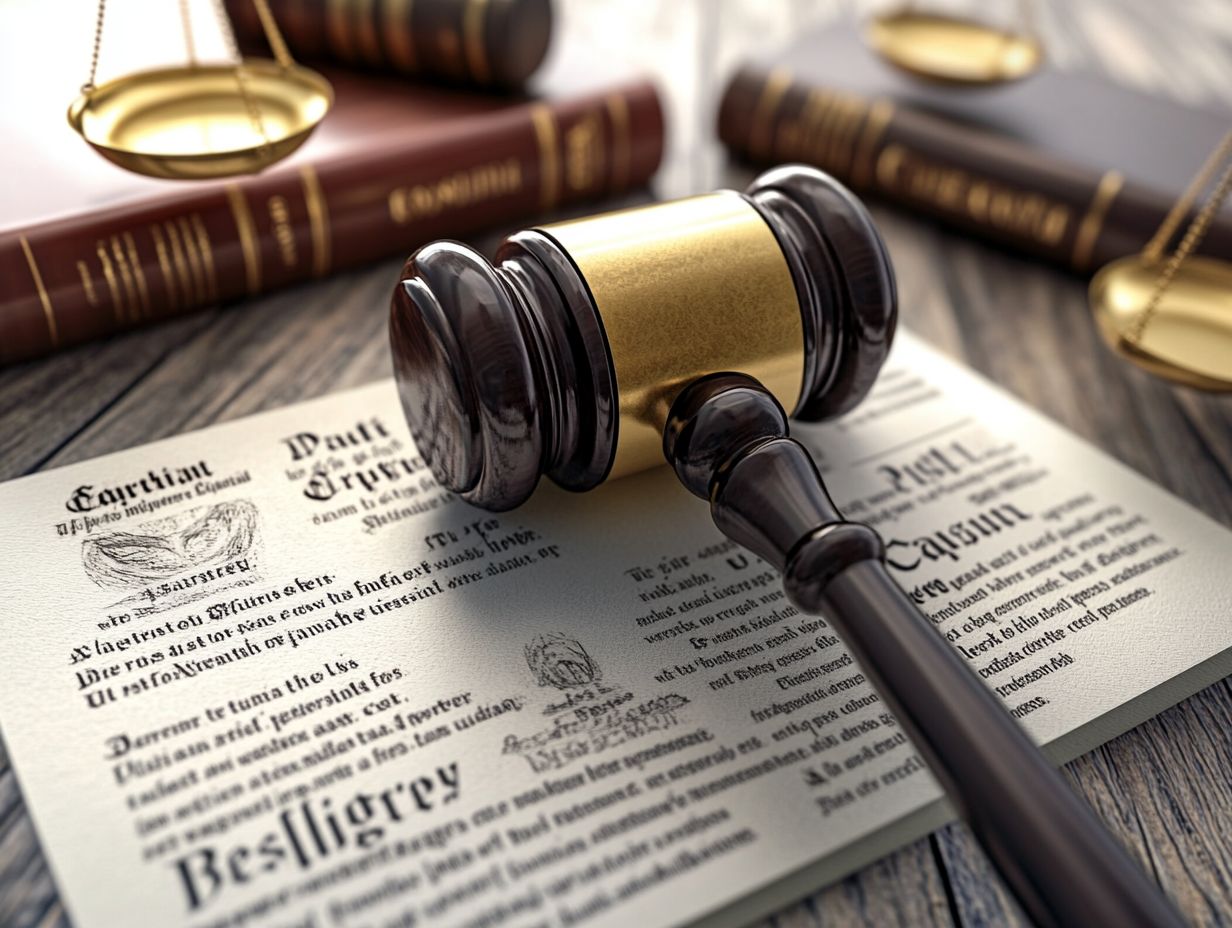
The Supreme Court’s ruling in Alice Corp. v. CLS Bank has brought big changes to the criteria for patent eligibility regarding software patents. This has ignited ongoing debates about patent law and its effects on innovation in technology.
At the heart of this decision was a dispute over algorithms designed to manage financial transactions. One party argued that these inventions deserved protection under patent law. Ultimately, the Court concluded that abstract ideas, including basic economic practices, can’t be patented unless they show something more than mere abstract concepts.
This ruling has reshaped the landscape of software patents by enforcing stricter criteria. This has led to controversy over what qualifies as a legitimate invention in technology. Critics argue that this could stifle innovation, as developers may hesitate to invest time and resources into new ideas, fearing potential invalidation under these heightened standards.
4. Association for Molecular Pathology v. Myriad Genetics: Gene Patents
The case of Association for Molecular Pathology v. Myriad Genetics offers a key look at gene patents. It prompts questions about the patent rights tied to naturally occurring DNA sequences and their implications in the biotechnology sector.
This ruling by the Supreme Court concluded that while artificial DNA made in a lab, or cDNA, can be patented, naturally occurring sequences can’t be patented since they are products of nature and can’t be owned.
As a result, this decision has reshaped biotechnology patent rights, making genetic testing and research more accessible. The legal ramifications extend beyond this case, influencing future patent applications and ownership. Innovators must rethink their strategies for protecting genetic material.
This ruling creates a more open environment for research, allowing scientists to explore previously inaccessible avenues without the fear of infringing on broad genetic patent claims.
5. eBay Inc. v. MercExchange: Injunctions for Patent Infringement
The eBay Inc. v. MercExchange case highlighted the complexities surrounding injunctions in patent infringement cases. It significantly impacted trial outcomes and sparked important discussions about patent reforms in the United States.
This ruling shifted the approach from automatically granting injunctions for patent holders to a more detailed examination of each case’s merits. By emphasizing a balanced approach, the Supreme Court’s decision led to greater scrutiny of the harm for patent holders versus the potential consequences for infringers.
Moving forward, patent infringement cases now require a thorough evaluation of various factors. This fundamentally changes the landscape of patent law. Consequently, both patent holders and potential infringers navigate an increasingly intricate legal environment, where stakes are high and litigation risks remain significant.
What Is the Purpose of Patent Law?
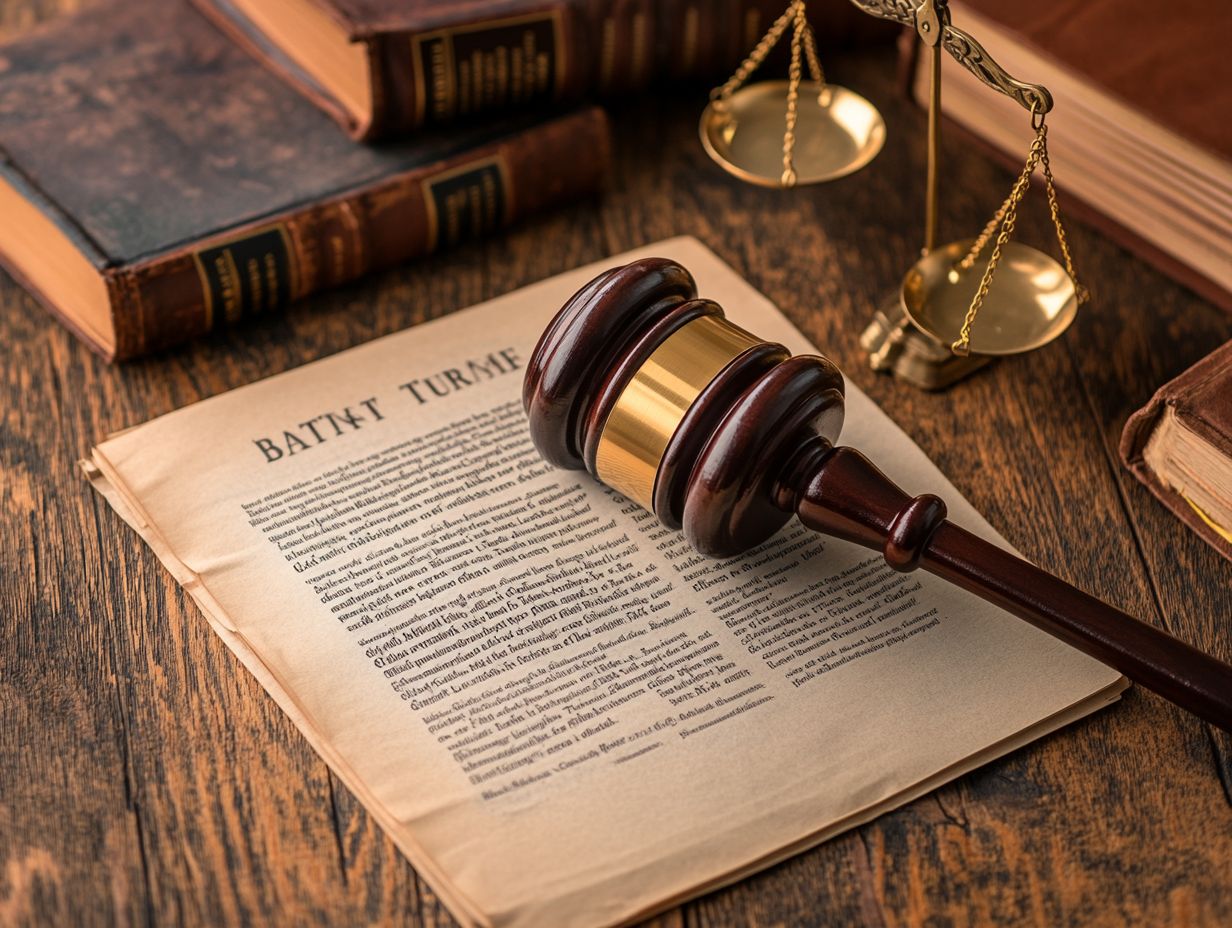
The purpose of patent law is to encourage innovation and protect intellectual property. By granting exclusive rights to inventions for a limited time, it fuels advancements in various technology sectors, allowing inventors to benefit from their creations without the fear of infringement.
This legal framework balances the interests of inventors and the public’s right to access innovative ideas. By providing a time-limited monopoly, patent rights encourage inventors to invest their time and resources into research and development, confident they can recoup their investments before their ideas become widely available.
As a result, the system not only fosters innovation but also promotes economic growth by creating jobs and driving technological progress. When inventors can shield their creations from unauthorized use, they are more likely to share knowledge and collaborate, paving the way for further advancements and a thriving economy fueled by creativity.
In short, patent law is vital for driving innovation and ensuring a thriving economy. Explore how patent law can protect your inventions today!
What Are the Basic Requirements for Obtaining a Patent?
To obtain a patent, you must meet several essential requirements. This includes submitting a comprehensive patent application that clearly defines your invention and demonstrates its novelty. The invention must not be obvious to others in the field.
This means you need to show that your invention isn t just new but also significantly distinct from prior art. For example, if you’ve developed a new type of battery that boasts greater efficiency than existing models, you’ll need to provide concrete evidence of those improvements.
Make sure your invention has a real-world impact. Throughout the process of getting a patent approved, thorough documentation becomes your best ally.
This documentation helps you tackle any objections that patent examiners may raise. It paves the way for a smoother journey toward securing the patent you desire.
How Have These Famous Cases Shaped Patent Law Today?
Famous cases like Diamond v. Chakrabarty and Alice Corp. v. CLS Bank have profoundly shaped the landscape of patent law today. Additionally, exploring 5 famous trademark disputes and their outcomes offers essential legal clarifications that influence your understanding of patent eligibility and interpretations in contemporary contexts.
These landmark decisions have redefined the boundaries of what qualifies as patentable subject matter. They have encouraged a more nuanced approach to assessing innovation, particularly in fields like biotechnology and software.
You can see the ramifications of these cases across various sectors. Learning about 5 uncommon copyright cases enables inventors and companies to navigate the complexities of patent law with a sharper understanding of legal precedents.
By establishing clearer standards, these rulings provide a framework that helps resolve disputes more effectively. They also foster an environment that promotes technological advancement and economic growth.
What Are the Potential Implications of These Cases on Future Patent Disputes?
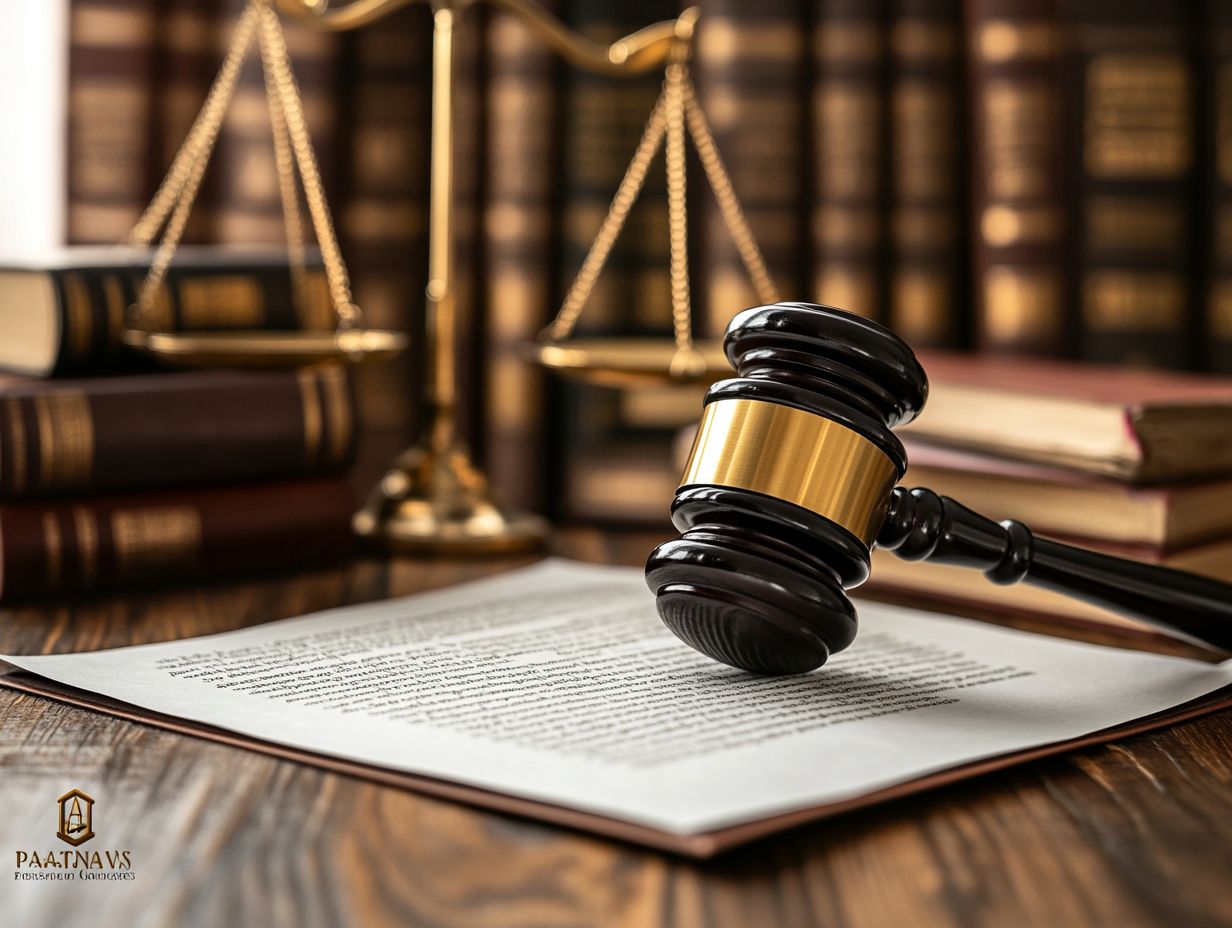
The implications of landmark cases, such as the top 5 famous trade secret cases, on future patent disputes could profoundly change how you enforce and interpret patent rights. This shift may lead to fresh controversies and prompt a re-evaluation of the existing legal frameworks that govern intellectual property.
As these cases develop, they could redefine the standards for protecting innovations. This will influence the strategies of corporations and impact individual inventors who depend on patent protections to safeguard their ideas.
You might find that the evolution of these legal standards encourages a more rigorous review process for patent applications. Inventors may be required to present more compelling evidence of novelty and utility.
On the flip side, there s potential for a more flexible approach that could invigorate innovation among tech startups by lowering barriers to entry. Ultimately, the balance we strike here will dramatically influence not only the legal landscape but also the culture of innovation in an increasingly competitive market.
How Do These Cases Reflect the Changing Landscape of Technology and Innovation?
The evolution of patent law through these pivotal cases mirrors the ever-shifting terrain of technology and innovation. It highlights the necessity for legal frameworks that can adapt to emerging sectors and the complexities they bring, including insights from the 5 influential patent laws you should know.
As new inventions challenge conventional norms and existing legal interpretations, it becomes increasingly clear that you must advocate for collaboration between lawmakers and judicial bodies. This partnership ensures that intellectual property rights keep pace with innovation.
The rapid growth of fields like artificial intelligence, biotechnology, and digital media has unleashed a torrent of unprecedented questions surrounding ownership, originality, and the practical enforcement of patents.
In this context, these legal precedents do more than address current challenges; they establish a foundation for future interpretations. This reinforces the need for a proactive approach in patent law that can flexibly respond to the fast-evolving technological landscape.
What Are Some Other Notable Patent Cases That Have Influenced the Law?
Several notable patent cases, such as Bilski v. Kappos and Mayo Collaborative Services v. Prometheus Laboratories, have significantly influenced patent law. For insights into key players in this field, check out the article on notable figures in IP litigation history. These landmark decisions changed the interpretation of patent eligibility.
Key cases like Alice Corp. v. CLS Bank International and Myriad Genetics, Inc. v. Association for Molecular Pathology further transformed the legal landscape. They addressed complex issues related to abstract ideas and natural phenomena, which are things that occur in nature. To stay informed about these important updates, check out the recent changes in patent law you should know.
These pivotal decisions altered patent outcomes and led to a stricter understanding of what qualifies as a patentable invention. Various industries, especially technology and biotechnology, now face more scrutiny when seeking patent protection.
As a result, companies must often reevaluate their research and development strategies. They also need to adjust their approach to managing intellectual property in light of these changing legal interpretations.
Frequently Asked Questions
- What are the most famous patent cases that have had a significant impact on the law?
Some of the most famous patent cases that have changed the law include Diamond v. Chakrabarty, Sony Corp. v. Universal City Studios, Inc., J.E.M. Ag Supply, Inc. v. Pioneer Hi-Bred International, Inc., Alice Corp. v. CLS Bank International, and 5 famous trademark cases that changed the law, such as Association for Molecular Pathology v. Myriad Genetics, Inc.
- What was the outcome of the Diamond v. Chakrabarty case?
The US Supreme Court ruled that a genetically modified microorganism could be patented. This set an important precedent for the patentability of living organisms.
- How did the Sony Corp. v. Universal City Studios, Inc. case affect copyright law?
This case, known as the “Betamax case,” established the concept of fair use in copyright law. It allows individuals to make copies of TV programs for personal use without infringing on copyright.
- What was the significance of the J.E.M. Ag Supply, Inc. v. Pioneer Hi-Bred International, Inc. case?
This “plant patent case” clarified the criteria for patenting plants. It established that asexually reproduced plants can be patented.
- How did the Alice Corp. v. CLS Bank International case impact software patenting?
This case set a precedent for software patentability. It ruled that abstract ideas implemented on a computer are not eligible for patents.
- What was the outcome of the Association for Molecular Pathology v. Myriad Genetics, Inc. case?
The US Supreme Court ruled that isolated DNA sequences cannot be patented. However, synthetic DNA sequences can be patented, setting a precedent for the patentability of genetic material.





